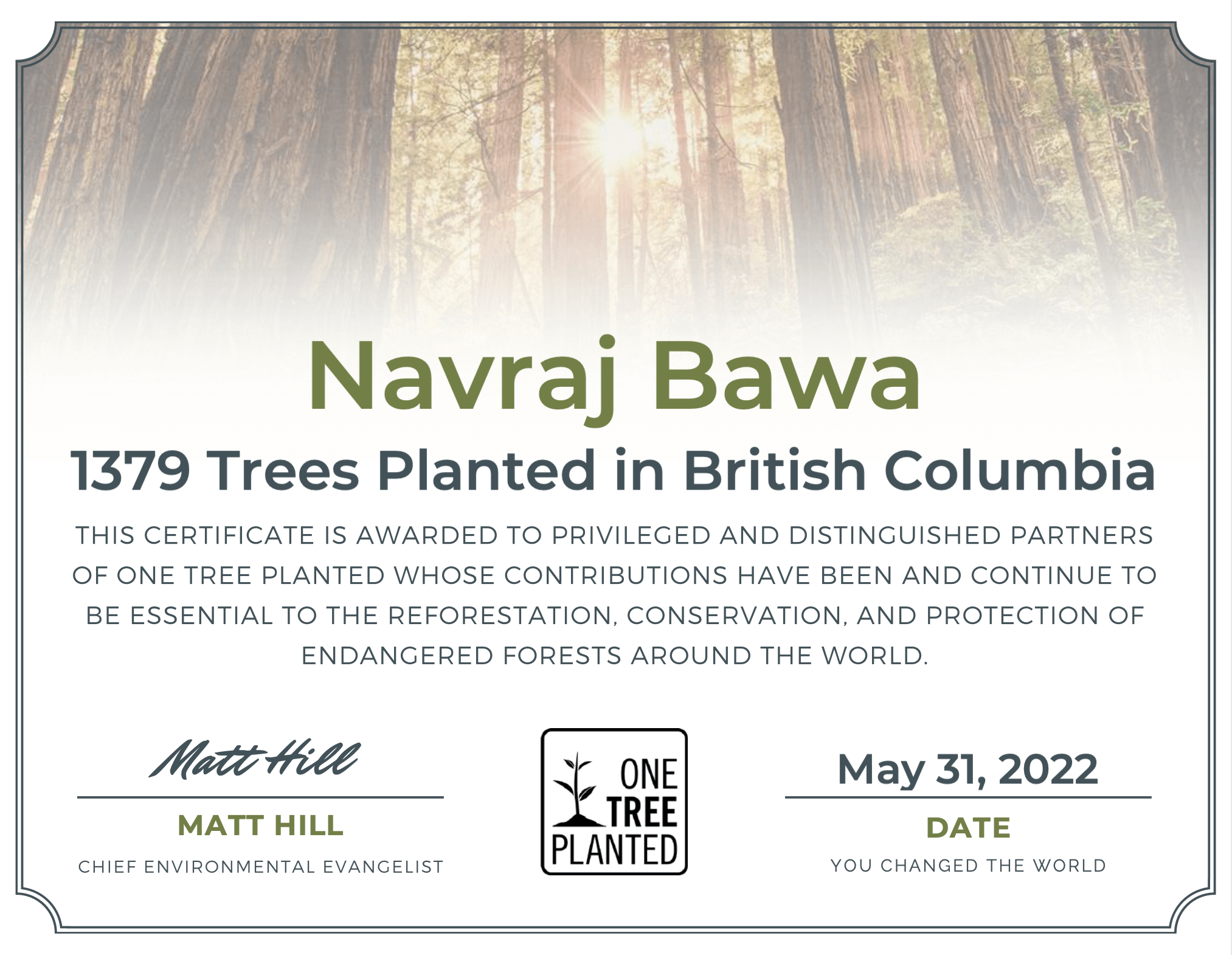Mission Possible Carbon Neutrality by 2030


Welcome note from Neal Bawa
“The typical American can plant 918 trees to become carbon neutral for life”
Our carbon footprint
Why Trees?
Every single one of us on the planet contributes to the damage of our planet, but it might be surprising to learn that regardless of income, the average American produces a shocking 44,000 pounds (22 tons) of carbon and methane emissions annually. That’s 5.5 times the world average of 4 tons, making America the most polluting nation on Earth on a per capita basis – everything from household emissions to daily commuting.
The numbers are even more devastating if your lifestyle choices make you a bigger polluter driving an SUV, living in a big house, or traveling frequently.
Rest assured, there are many ways we can reduce the size of our carbon footprint: solar panels, bike to work, adopt a sustainable diet, turn down your thermostat, recycle – all of which are great. But there is one way to reduce your emissions and also make the world more beautiful, improve water quality, and provide numerous economic and social benefits. The answer is planting trees!
Trees absorb carbon
Every living thing on Earth is made up of carbon, hydrogen, oxygen and nitrogen which make up 96% of our body, and most of a tree’s roots, trunk, branches, and leaves.As a tree matures, it can consume 50 pounds
of carbon out of the atmosphere each year and replace it with lifegiving oxygen. Best yet, the average life of certain trees can range from 300 to 3,500 years. By planting the right trees, you can help clean the air and fight climate change for generations to come.
Trees help save energy
Since a mature tree can suck on average 50 pounds of carbon dioxide per year out of the atmosphere, it would take about 880-920 fully grown trees per person to offset the average person’s carbon emissions. And the best part? It costs only $1 to plant one tree. This brings your total tree planting investment to $880-920 compared to $16,000 on solar panels.
This reduction in energy goes a long way when it comes to shrinking your carbon footprint, because over
1/3 of U.S. carbon emissions are caused by the production of electricity.
Plant a tree today
If you’re looking to reduce your carbon footprint and give back to the planet, trees are one of the most effective and personally beneficial ways to do it. A nicer home, a better environment, and more money in your wallet. Those are some pretty good reasons to plant a tree.
Partnering with the U.S. Forest Service, ONE TREE PLANTED is a 501(c)3 non-profit based in the state of Vermont that plants the right trees where they are needed most at only $1 per tree.
About
ONE TREE PLANTED
One Tree Planted is a non-profit environmental charity on a mission of global reforestation. Through their partnerships with the U.S. Forest Service, U.S. State Forest and Conservation District, they are able to plant trees in many regions across the United States, including California, Florida and Oregon, for an unbelievable cost of $1 per tree.
Can I choose where to plant my trees?
Yes, you can choose from any of their tree planting projects and help to support reforestation in the United States.
Apalachia
This project is a 5-year, multi-state effort. Our planting partners are looking to restore forests across all Appalachian states.
With your contribution, the project will help restore areas affected by wildfires throughout the whole of California.
Florida
For this reforestation project, they will plant a mix of species to benefit Florida’s rich diversity of pine forests, wetlands and incredible ecosystems.
Idaho
Supporting watersheds in Idaho will support the ecosystems of neighboring states that depend on freshwater flowing from the Rocky Mountains.
They will plant over 35 native species so that the full ecosystem is supported and degraded forests can be restored.
